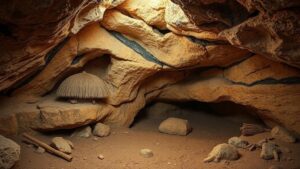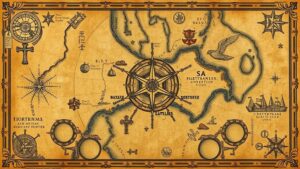Detecting in Urban Ruins for Hidden Stash Spots in Wall Cavities or Basements
Detecting Hidden Stash Spots in Urban Ruins
Urban ruins, often marked by abandoned buildings and derelict infrastructures, present numerous opportunities for exploration and discovery. Among the secrets they may hold are hidden stash spots, which can be concealed within wall cavities or basements. Detecting these clandestine areas requires a combination of observational skills, specialized tools, and strategic methodologies. This article delves into the techniques and considerations crucial for effectively identifying hidden stash spots in urban ruins.
The Importance of Contextual Understanding
Before commencing a search for stash spots, it is essential to understand the historical context of the ruins being explored. Different periods and purposes for these structures can shape their architecture and construction techniques. For example, buildings from the Prohibition era in the United States may have been constructed with secret compartments for smuggling alcohol. Understanding these historical nuances can guide efforts and enhance the likelihood of successful detection.
Techniques for Detection
There are several techniques employed to uncover hidden stash locations within wall cavities or basements of urban ruins. Below are some of the most effective methods:
- Visual Inspection: The first step in any detection effort is a thorough visual examination. Look for inconsistencies in wall texture or paint, signs of previous modifications, or unusual structural components that could indicate hidden spaces.
- Acoustic Testing: Utilizing a hammer or a tapping tool, explorers can identify hollow sounds that may reveal the presence of cavities behind walls. This acoustic method can be particularly effective for detecting concealed compartments.
- Advanced Imaging Technology: Tools like thermal imaging cameras can assist in identifying temperature differentials caused by hidden spaces. Also, radar technology may penetrate walls and produce images that highlight potential stash areas.
- Magnetic Field Detection: Magnetic anomaly detection can identify unexpected metal objects or anomalies within walls, which may denote the presence of hidden stashes. This method is especially useful in older buildings with varying materials.
Real-World Examples
Several cases illustrate the successful detection of hidden stash spots within urban ruins. In 2015, a team of urban explorers in Detroit discovered a series of concealed compartments in the basement of an old speakeasy. Using acoustic testing, they identified hollow sections of the walls that when opened revealed bottles of vintage liquor, illustrating how knowledge of the buildings history informs detection strategy.
In another instance, the use of thermal imaging technology allowed a historic renovation team in New Orleans to identify concealed storage rooms filled with historical documents behind decades-old drywall. The application of cutting-edge imaging techniques not only preserved the integrity of the building but also uncovered invaluable archival materials.
Safety Considerations
While the excitement of exploring urban ruins is palpable, explorers must prioritize safety. Ruins may contain hazardous materials, unstable structures, and other risks. Below are key safety measures to undertake:
- Personal Protective Equipment (PPE): Always wear safety gear including gloves, hard hats, and masks to protect against dust and potential chemical exposure.
- Structural Assessment: Before entering any ruin, conduct a risk assessment to identify any signs of structural instability or potential hazards.
- Team Exploration: Never explore urban ruins alone. Having a companion ensures safety in case of an emergency situation.
Takeaway and Final Thoughts
Detecting hidden stash spots within urban ruins requires a blend of historical knowledge, technical skills, and safety precautions. Urban explorers equipped with the right tools and methodologies can uncover fascinating elements of history that may otherwise remain hidden. As cities evolve and urban spaces continue to change, the exploration of ruins offers a unique lens into the past, unveiling stories and artifacts critical to understanding local heritage.
For those looking to delve deeper into urban exploration, it is vital to remain respectful of the properties and their histories while diligently working to uncover their secrets responsibly.


